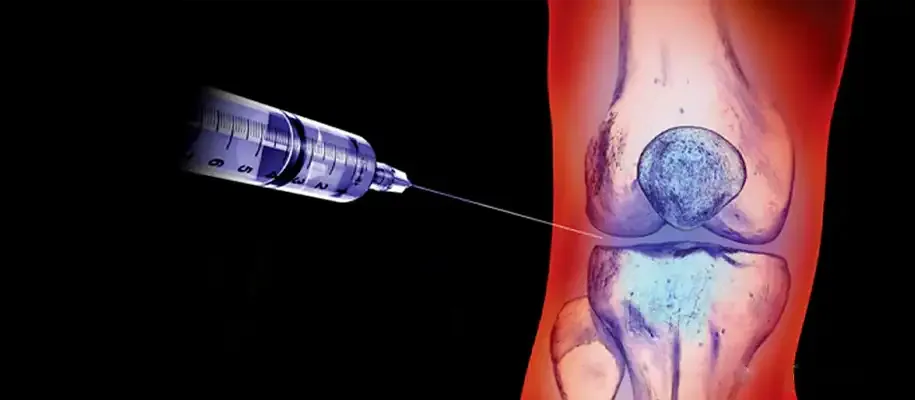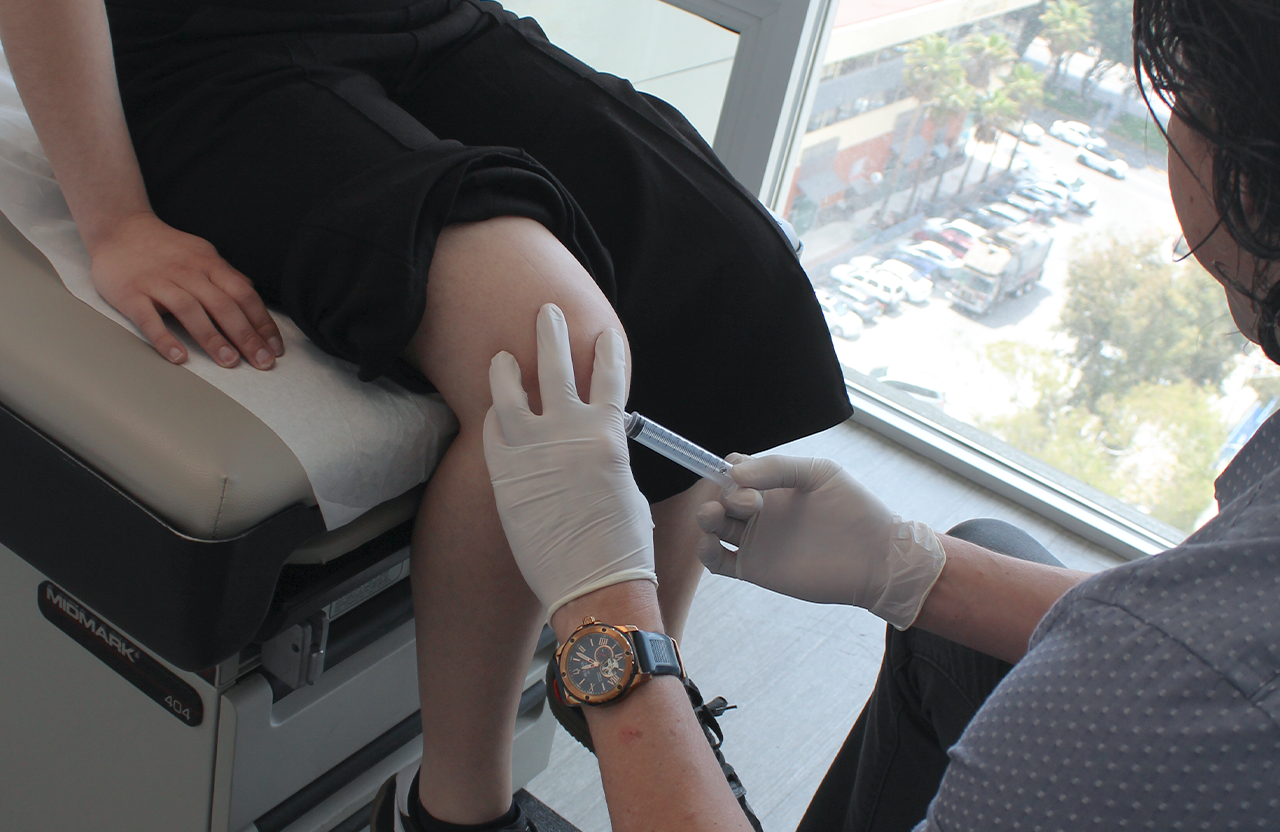What are infiltrations?
Infiltration is the introduction of a liquid through the pores of a solid object, basically it's an injection in a specific anatomical place where we want it to perform a specific action.
In orthopedics we use a wide variety of infiltrations to treat pathologies where the common denominator is a tissue that was injured and is secreting substances that inflame it. What we seek to do is reduce inflammation by injecting a substance to reduce pain so the body can recover.
Why are they used in knees?
Sodium hyaluronate is found in the synovial fluid, thanks to this the joints are lubricated and can function as it cushions and protects the ends of the bones reducing friction.
However, as the knee wears out, this molecular weight decreases, because it begins to have more activity of an enzyme called: Hyaluronidase that breaks down hyaluronic acid, which will cause wear of the articular cartilage since it doesn't have that gel that cushions and lubricates.
There are multiple substances that can be used, from non-steroidal anti-inflammatories to steroidal ones, analgesics and hyaluronic acid, which can be placed in different parts of the body, but are commonly used within joints.
In the case of steroidal anti-inflammatories, which is what is commonly used, it is not recommended to do more than three times a year, as they can have side effects on the surrounding cartilage or tendon.

Recommended patients for hyaluronic acid injections
This type of infiltration is recommended to treat cartilage injuries in weight-bearing joints like the knee in people:
Who have knee osteoarthritis, tendinitis bursitis
Patients with meniscus injuries
When anti-inflammatory or analgesic medications are not having the expected results to reduce pain.
How is hyaluronic acid applied in the knee?
It's a fairly brief outpatient procedure where the patient will be seated at an angle that allows maneuvering their knee, then the area is disinfected, and the high molecular weight hyaluronic acid is placed on a single area of the knee, and this liquid will be distributed throughout the knee.
Patient reactions vary, some patients experience a little pain, heat or swelling after receiving the injection, these symptoms disappear in a couple of hours and it's recommended to apply cold compresses to relieve pain, also follow instructions such as not standing or exercising or making efforts during the first days. It's normal for each patient to experience a different sensation since each knee is unique, for example there are patients who experience a feeling of relief after a few days, others after a couple of weeks.

